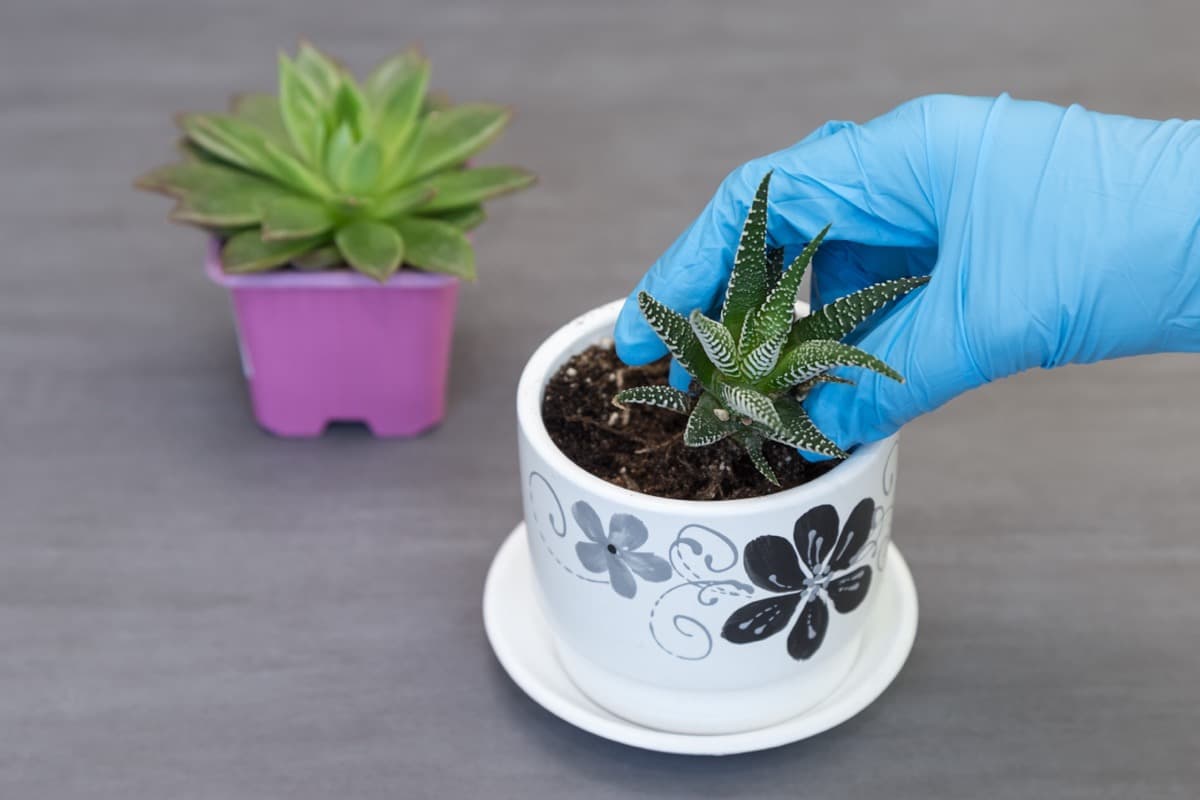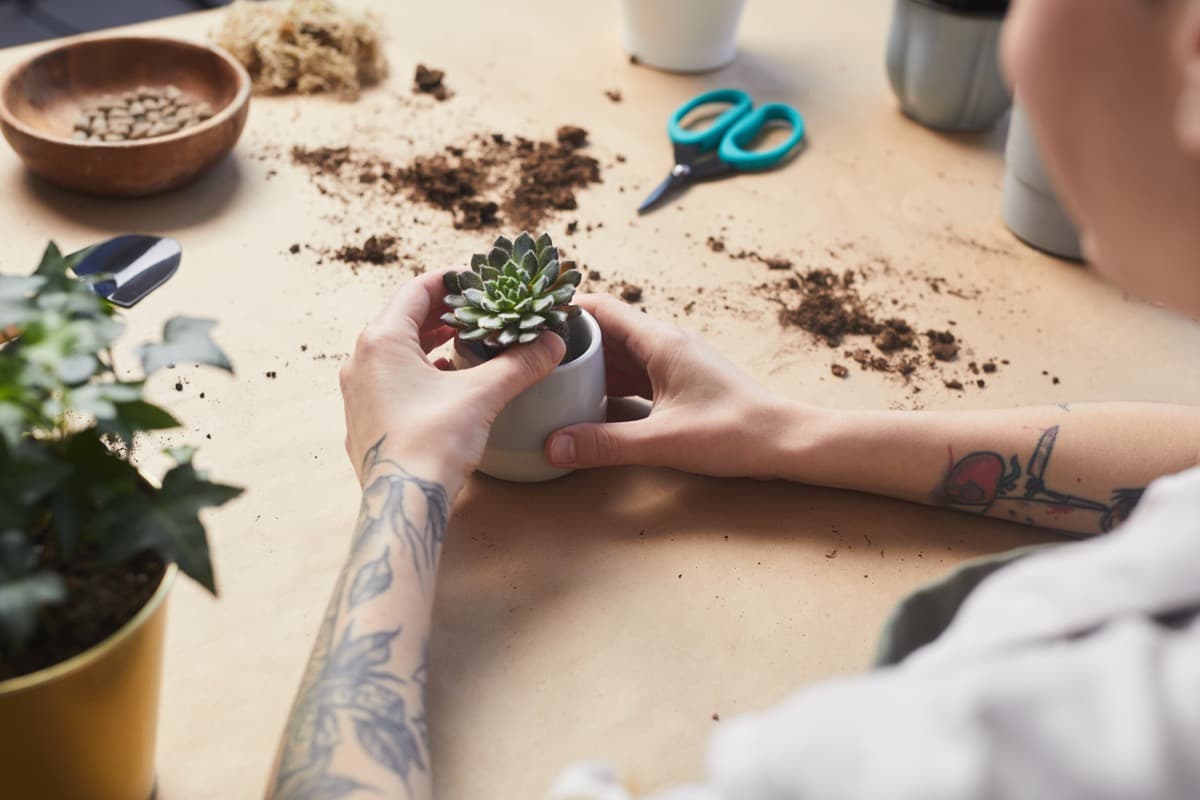Succulents are cherished for their hardiness and unique beauty, which makes them a prevalent choice among indoor plant enthusiasts. Succulents are trendy indoor plants loved for their low maintenance needs and unique beauty. But, even these hardy plants are not immune to certain problems. This article serves as a guide to address common issues like succulent stretching, succulent losing all leaves, succulent closing up, and succulent leaves falling off when touched.

We’ll also discuss how to manage a succulent turning light green and give you tips on treating indoor succulents and dealing with succulent diseases using natural pesticides for succulents. With this information, you’ll be well-equipped to keep your succulents thriving and their charm intact.
10 Common Problems With Indoor Succulents
Overwatering Indoor Succulents and Root Rot Prevention
Many indoor succulent owners face a common issue: overwatering, leading to a potentially fatal condition known as root rot. When succulents receive excessive water, their roots can’t absorb it all, resulting in roots rotting. To avoid this, ensure your succulents have a proper watering routine, typically only when the soil is completely dry.
Prevention is better than the succulent plant not doing well due to rot. In cases where root rot has set in, the immediate action is to stop watering and letting the soil dry out. If the condition worsens, you may need to repot the plant in fresh, well-draining soil.
Indoor Succulents With Etiolated or Stretched Growth
A succulent stretching fix is needed when indoor succulents show signs of etiolated or stretched growth. This typically happens when the plant is not getting enough light, causing it to grow taller in search of more light. In this case, you can fix the problem by gradually increasing the light exposure. An etiolated (less exposure to light) succulent may not return to its compact size, but proper light exposure will prevent further stretching. For extreme cases, a process called ‘beheading’ can be used where the stretched part of the plant is cut off, and the healthy top is replanted.
Pest Infestations in Indoor Succulents and Natural Remedies
Like other indoor plants, succulents are also susceptible to pest infestations. Pests such as aphids, gnats, and spider mites can all be problematic. The key is early detection and rapid response. Treat indoor succulents promptly by using a natural pesticide for succulents. This could be as simple as a homemade water spray and mild dish soap. In severe cases, you may need to resort to commercial organic pesticides. Always isolate the affected plant to prevent pests from spreading to other plants.
Nutrient Deficiencies in Indoor Succulents and Fertilization Tips
A succulent turning light green might indicate a nutrient deficiency. It’s important to remember that although succulents can thrive in harsh conditions, they still need nutrients to grow and stay healthy. You can treat this by providing a balanced, water-soluble fertilizer specifically for succulents. However, be careful not to over-fertilize, as this can harm the plant. Regularly check your succulents for signs of nutrient deficiency, such as color change and slow growth, and treat them accordingly.
In case you missed it: How to Revive Dying Succulents: Reasons, Treatment, and Solutions

Indoor Succulents With Yellowing or Browning Leaves
It’s alarming when your succulent leaves start turning yellow or brown. This problem is often associated with watering issues—either overwatering or underwatering. Overwatered succulents may have mushy leaves that are yellow or brown, while underwatered plants have crisp, brown leaves. Adjust your watering routine to suit the succulent’s needs in both cases. Yellowing leaves can also be a sign of sun damage. If the plant is exposed to direct, intense sunlight, consider moving it to a place where it can receive filtered light.
Sunburned Indoor Succulents and Providing Adequate Light
Just like humans, succulents can get sunburned too. This usually happens when indoor succulents are abruptly exposed to intense, direct sunlight. Sunburned succulents often have discolored or scorched-looking leaves. The solution is to provide adequate light without causing damage. Gradually acclimate your succulents to sunlight by placing them in a shaded area and slowly increasing their light exposure over time. Once damaged, the sunburned leaves will not recover, but the plant will grow new, healthy leaves with proper light management.
Indoor Succulents Suffering From Mealybugs or Scale Insects
Mealybugs and scale insects are prevalent pests that harm succulents by draining their sap, leading to weakness and potential death. It’s crucial to tackle this problem as soon as it’s spotted. Mealybugs appear as cotton-like substances on your plant, while scale insects look like small bumps. Wiping the pests away with a cotton swab dipped in alcohol is a straightforward solution. For more severe infestations, consider using a natural pesticide for succulents.
Improper Soil Drainage and Its Impact on Indoor Succulents
Another common problem is improper drainage, leading to waterlogged soil and subsequently causing root rot. Succulents thrive in well-draining soil. Specialized potting mix for succulents and cacti, like coarse sand or perlite, enhances drainage. Ensuring your pots have drainage holes at the bottom is also essential.
Leaf Drop or Shriveling in Indoor Succulents and Corrective Measures
Succulent leaves falling off when touched can be quite unsettling. This can occur for various reasons, including overwatering, underwatering, temperature stress, or a sudden environmental change. To fix this, first, identify the cause. If it’s a watering issue, adjust your watering schedule. If temperature stress is the culprit, move the plant to a more favorable location. Shriveling leaves, particularly on a succulent closing up, often indicate underwatering or low humidity. Adjust the watering regime, or use a pebble tray to increase humidity.
Transplant Shock in Indoor Succulents and Acclimation Techniques
Finally, succulents can experience transplant shock when they are moved or repotted. This can cause them to wilt, lose leaves, or even die. To reduce the risk, make sure the plant is healthy, avoid excessive root disturbance, and use the right potting mix. After transplanting, give the plant time to adjust to its new environment. If a succulent lost all leaves due to transplant shock, don’t panic. With the right care, it may grow new ones.
In case you missed it: 9 Reasons Why Your Succulents are Turning Yellow, Brown, Black: Treatment and Solutions

Conclusion
Maintaining indoor succulents’ health can be challenging but not insurmountable. Understanding the common problems that these resilient plants face is the first step to ensuring their optimal growth. Remembering that most succulent issues stem from improper watering, inadequate light, and unfavorable soil conditions is critical. Therefore, mastering these aspects and vigilant care can considerably mitigate most of the problems.
As with any living organism, succulents have unique requirements and indications. Observing your plants and responding promptly to any appearance or growth changes is crucial. Remember, each problem you encounter and overcome adds to your learning and experience as a plant caretaker. With the right knowledge, patience, and consistent care, you can ensure that your indoor succulents thrive and add beauty to your space for years.
- Feed Your Flock for Less: Top 10 Tips to Save on Chicken Feed
- Ultimate Guide to Ossabaw Island Hog: Breeding, Raising, Diet, and Care
- Hatching Answers: The Top 10 Reasons Your Chickens Aren’t Laying Eggs
- Eggs and Economics: Breaking Down the Cost of Raising Backyard Chickens
- Defend Your Greens: Proven Methods to Keep Iguanas Out of Your Garden
- Ultimate Guide to Cinnamon Queen Chicken: A Comprehensive Guide for Beginners
- Ultimate Guide to California Tan Chicken: Breeding, Raising, Diet, Egg-Production and Care
- Ultimate Guide to Marsh Daisy Chicken: Breeding, Raising, Diet, and Care
- 10 Types of Chicken Farming Businesses You Can Start for Profits